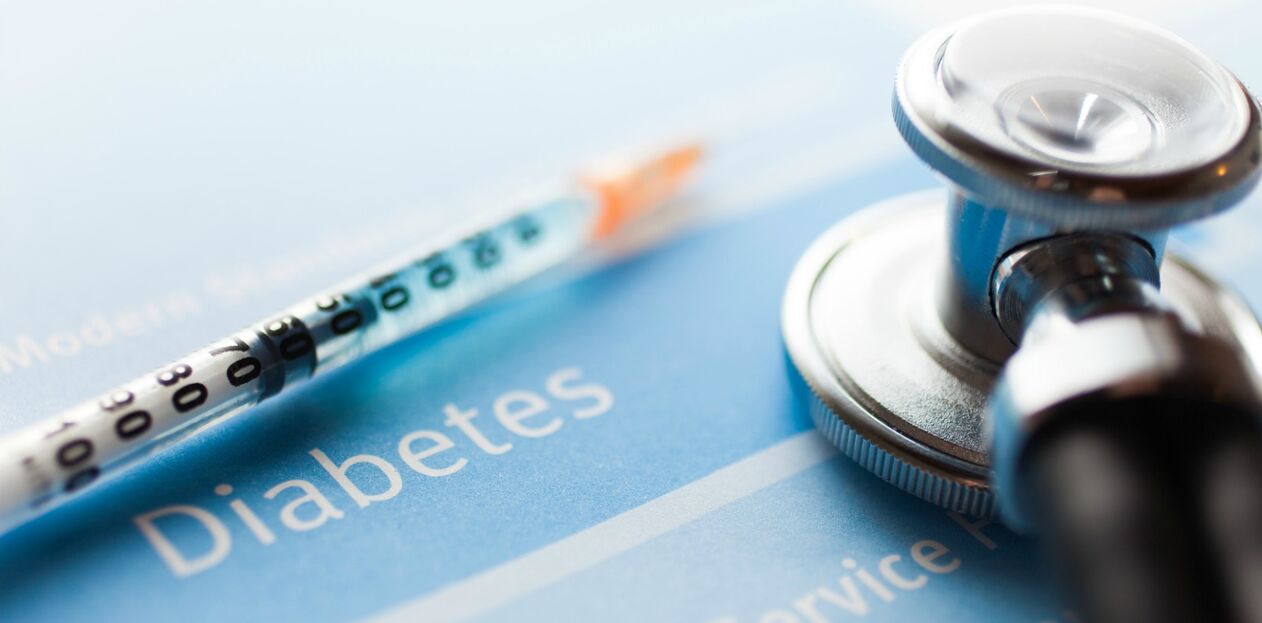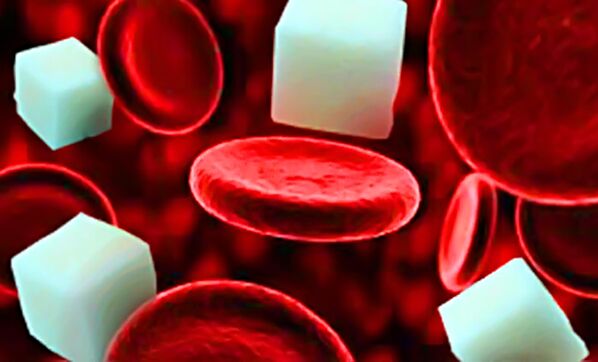The diagnosis of diabetes mellitus begins with the detection of the main signs - symptoms. Despite the similarity of the clinical manifestations of the disease, each type of diabetes has its own characteristics.
Diabetes mellitus was described by the ancient Egyptians as an independent nosological entity about one and a half thousand years ago. Then the diagnosis was established by various methods, which are not used today due to their irrelevance. For example, Hippocrates told his patients that they were suffering from diabetes, and when tested, the urine tasted sweet, and the clinic was bright. In Chinese medicine, to diagnose this insidious disease, insects - flies, bees - were used, which would sit on the container where the urine was placed if there was sugar in the urine.
Classification

Diabetes itself is a pathology of the endocrine system. With it, the concentration of sugar in the blood constantly rises for various reasons. This is usually insulin deficiency, which can be absolute or relative. This hormone is produced in the beta cells located in the tail of the pancreas.
The result of this process is always a violation of metabolism in the human body at all levels, which ultimately leads to severe complications from the cardiovascular and nervous systems, and the rest of the body's functional units suffer a little less.
To date, there are several types of diseases with completely different approaches to treatment. At the same time, regardless of diabetes mellitus, the clinic of this condition is almost always the same.
The most common classification in the literature:
- At a young age, as well as in children, diabetes mellitus with absolute insulin deficiency is most common. It is called the first type.
- Insulin-dependent diabetes occurs more often in adulthood and is characterized by a relative lack of insulin. Type 2 diabetes usually occurs in older people, but there are cases where the pathology also affects young people. It is more common than the first type, and one of the provoking factors of the pathology is excess weight.
- Symptomatic. This type of disease can occur against the background of other pathological processes, therefore it is called secondary.
- Gestational diabetes during pregnancy. It often disappears on its own after birth.
- With nutrition, a pathology such as diabetes mellitus can also develop.
It should be noted once again that the first and second types of pathologies differ in the development of absolute and relative insulin deficiency, respectively. Therefore, it is the first type of disease that requires constant administration of insulin from the outside. And when the pancreas is exhausted, especially in the case of a long course of type 2 diabetes, such a need arises.
By itself, the second type of disease can be characterized by sufficient insulin production, but the cells of the body are not sensitive to it for various reasons: the organelles responsible for this process may be blocked or their number is insufficient for effective communication. As a result, a lack of sugar develops in the cells, which serves as a signal to increase the production of insulin, which has little effect. As a result, the amount of insulin produced begins to decrease, which leads to an increase in glycemic indicators.
The reasons

The basis of the absolute deficiency of insulin, which causes the first type of disease, is the autoimmune process. It is caused by a disruption of the immune system, which provokes the production of its own antibodies aimed at fighting the beta cells of the islets of Langerhans. This leads to their destruction.
The main provoking factors of immune system disruption with the subsequent production of antibodies are often various viral infections, the most aggressive of which can be rubella, chicken pox, mumps. There is a genetic predisposition to pathology.
It should be noted that a substance such as selenium increases the probability of the second type of pathology. But this is far from the most important factor in the development of the process. These include the same hereditary predisposition and the presence of overweight. These factors should be considered in more detail.
- The higher the degree of obesity, the higher the risk of diabetes, and the third degree increases 10 times. Abdominal obesity, that is, when fat deposits are located in the abdominal cavity, can be the result of metabolic disorders, that is, prediabetes.
- Hereditary tendency indicates that the risk of diabetes with this pathology in blood relatives increases several times. It doesn't matter whether a relative is older or younger. Sometimes there is a tendency that the disease is transmitted from generation to generation, but this is just a coincidence.
It should be borne in mind that if diabetes is detected, the clinic will develop very slowly and gradually, which makes timely diagnosis difficult.
Secondary diabetes mellitus usually develops against the background of the following processes:
- Organic pathologies of the pancreas - violation of integrity due to inflammatory or oncological process, trauma, resection.
- Other hormonal pathologies - diseases of the thyroid gland, adrenal glands, pituitary gland.
- Toxic effects of drugs and other chemicals.
- Changes in insulin sensitivity against the background of any pathological process.
- The patient has a genetic disease.
Gestational diabetes and diabetes due to insufficient nutrition are slightly different because they can be reversible processes.
What happens in the body

Due to one or more of the above reasons, a process occurs in the body in which excess sugar in the form of glycogen in the muscle tissue and liver stops accumulating. The sugar that the body cannot process remains in the blood, and only a small part of it is excreted by the kidneys. This has an extremely negative effect on all organs and systems of the body.
Since glucose does not enter the cells, they begin to actively break down fats to obtain energy. This leads to an increase in nitrogenous residues - ketone bodies, which disrupt all metabolic processes.
Clinical picture
The most characteristic symptoms of pathology that have not yet been diagnosed or with a sharp increase in sugar can be:
- excessive thirst, accompanied by unbearable dryness in the mouth;
- increased urination during the day and at night;
- appearance of general weakness, drowsiness, fatigue and heaviness in muscles;
- appetite increases significantly;
- skin and genital itching;
- wound surfaces heal for a very long time;
- In type 1 diabetes, patients lose a lot of weight, while in type 2 diabetes, on the contrary, patients gain weight rapidly.
Usually, with the development of type 1 diabetes, clinical symptoms develop at lightning speed, and the second type of pathology is characterized by a gradual increase in the clinic, sometimes the symptoms can be fluctuating (the normal state is replaced by the clinical picture of diabetes). ).
Complications of the disease

Both types of pathology are characterized by the development of complications that usually develop in a person in old age. Diabetes also contributes to the earlier development of such conditions.
- Serious diseases of the cardiovascular system: atherosclerosis, ischemic conditions.
- Development of microangiopathies in lower limbs, kidneys, eyes.
- Damage to the nervous system, which manifests itself in the form of dry skin, severe pain and cramps in the legs, reduces pain sensitivity.
- Decreased vision.
- Damage to the kidneys with impaired function and increased protein secretion.
- Ulcerative defects develop in the legs, which eventually lead to necrotic and purulent processes. The basis of this is the development of neuropathy and angiopathy of the lower extremities.
- The development of infectious complications on the skin - abscesses, fungal infections.
- Due to poor glycemic control, comatose states with high or low sugar can develop. It is noted that hypoglycemia (low sugar) is more difficult to treat than hyperglycemia (high sugar).
Sometimes with type 1 diabetes there is a deterioration of well-being accompanied by general weakness. It can be accompanied by abdominal pain up to vomiting, the breath has an acetone smell. These changes are explained by the accumulation of ketone bodies, which should be removed from the blood as soon as possible. If this does not happen, ketoacidotic coma develops.
Coma with the wrong dose of insulin, possibly when an excessive amount of insulin is taken. To prevent the development of any diabetic coma, you must constantly monitor the blood sugar level and choose the insulin doses adequately.
Diagnostics

Patients diagnosed with diabetes are under the supervision of an endocrinologist. Diagnosis of pathology includes the following tests:
- Glycemic profile analysis.
- Glucose tolerance test.
- Urine analysis for the presence of sugar and acetone, there are special test strips for this.
- A blood test for glycated hemoglobin never exceeds the norm in healthy people.
- Determination of reduced C-peptide in the first type of pathology. In the second type, it can remain within the normal range.
Treatment
To treat the process, patients need:
- Stick to dietary recommendations. They mean limiting foods that contain fast carbohydrates. Diet should be considered, five meals a day is preferred.
- Insulin therapy is prescribed to patients with type 1 or secondary insulin-dependent diabetes. It is injected under the skin with a syringe or special syringe pens. Sometimes patients are fitted with an insulin pump. To this day, the development of an artificial pancreas continues, which itself can measure sugar and inject the right amount of insulin.
- The second type of disease involves taking drugs in the form of tablets that reduce sugar.
- Special physiotherapy exercises are prescribed, because physical activity helps normalize glycemia and fights obesity.
It should be taken into account that this disease is treated for life. The higher the patient's level of self-control, the less life-threatening complications will develop and their development will be significantly slowed down.
























